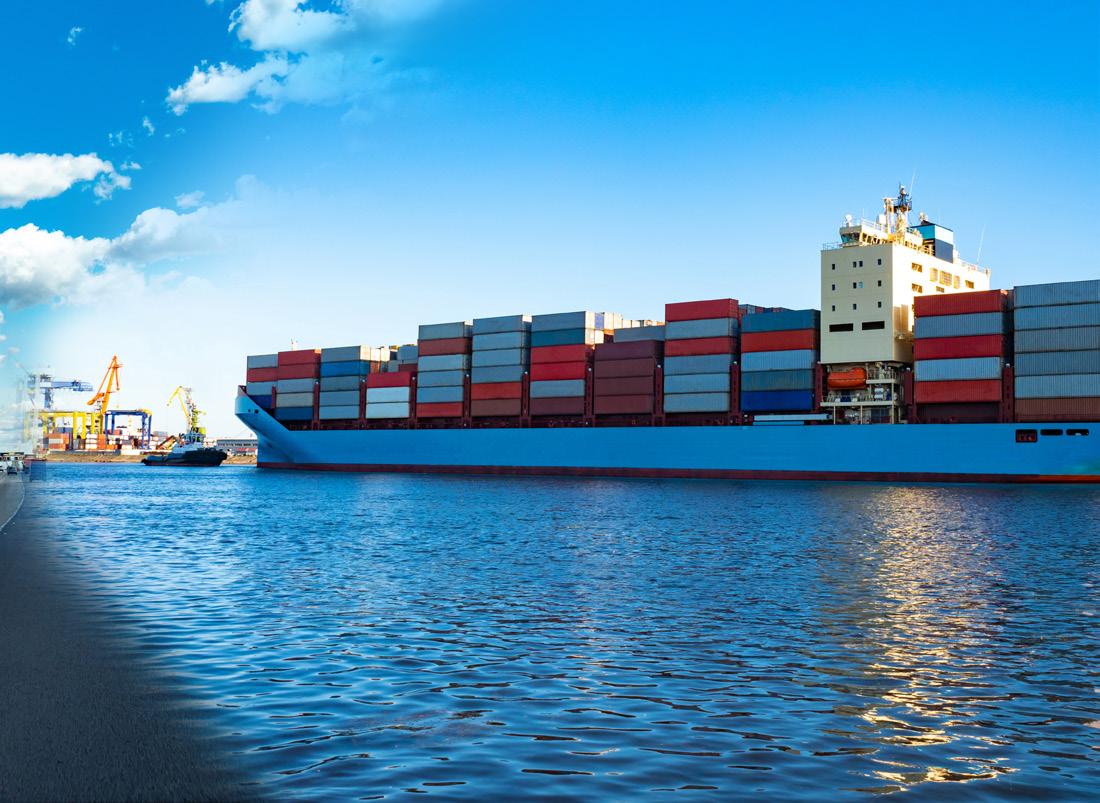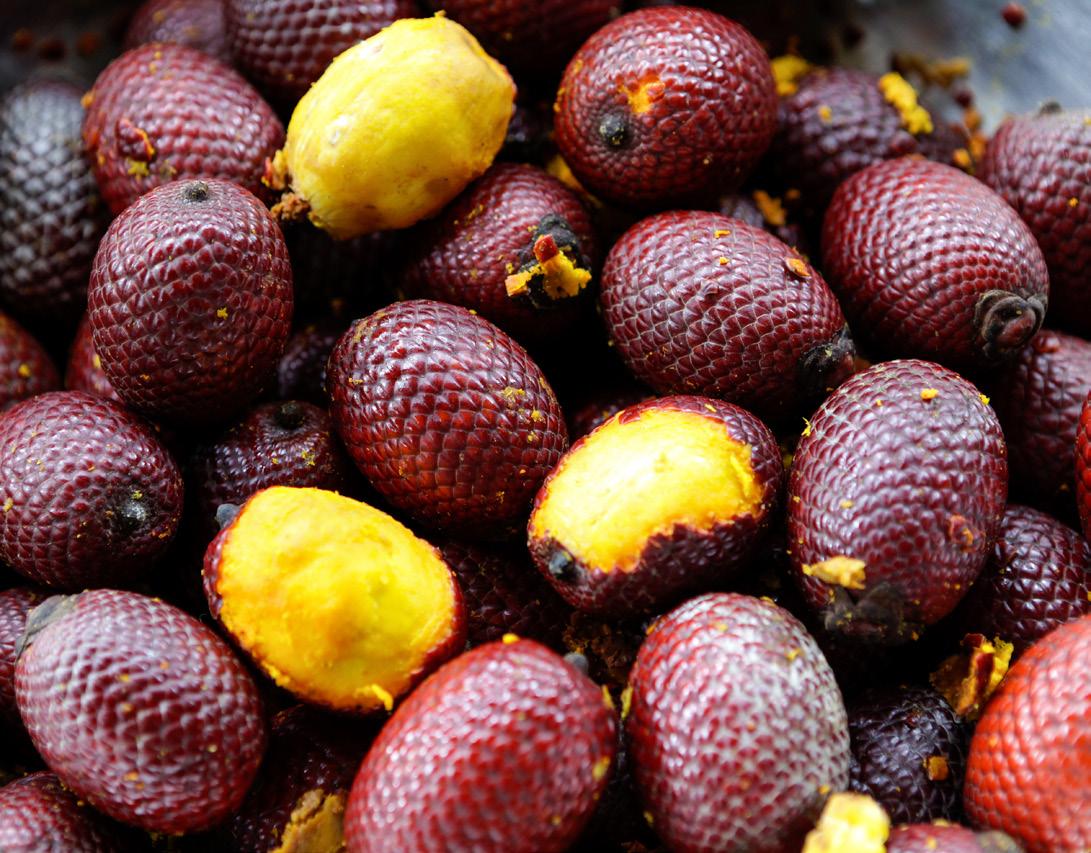
5 minute read
Business environment & trade
Food-producing powerhouse
Latin America is a global food-producing powerhouse with sourcing opportunities for almost every food and drink category By 2028, the region will account for more than 25% of global exports in agricultural and fisheries products, according to the Food and Agriculture Organization (FAO).26
During the COVID-19 pandemic, efforts focused on ensuring business as usual Agriculture ministers across Latin America pledged to reactivate food production in the post-pandemic period27 and industry experts praised Brazil for maintaining production and exports during the worst of the COVID-19 pandemic
Andy Duff, head of food and agribusiness research for Rabobank South America, said:
“Global perception of Brazil as a reliable supplier should receive a boost given its strong performance as a producer, processor, and exporter during the crisis. Farmers and companies have had their business models severely tested and have learned valuable lessons that will lead to greater strength and resilience in the future.” 28
Harmonisation on the horizon
There are three main trade blocs in South America Mercosur is composed of Argentina, Brazil, Paraguay, and Uruguay (Bolivia’s membership is pending while Venezuela has been suspended since 2017); the Pacific Alliance is composed of Chile, Colombia, Mexico, and Peru; and the Andean Community (CAN) is composed of Bolivia, Colombia, Ecuador, and Peru
These trade alliances have introduced some levels of harmonization for food and beverage companies operating in the region Mercosur, for instance, has harmonized its food additives and general food and nutrition labelling regulations for foods and beverages, with these regulations currently under review When approved, Mercosur countries will be required to implement the bloc’s harmonized regulations at a national level 29
Today, organic food producers in Argentina, Chile and Costa Rica can export their produce to the EU without the need for third-party certification as their organic standards are considered equivalent to those in the EU 30
Towards tariff-free trade: EU-Mercosur trade deal
After nearly 20 years of negotiations, the European Union and Mercosur announced in 2019 they had agreed on a free-trade agreement that would create a trade bloc of almost 780 million people and eliminate tariffs for 90% of traded goods
Mercosur currently has an above-average tariff rate of 12%, compared to 5% for OECD countries Reducing these tariffs would therefore increase competition for South America in the years ahead, benefiting consumers in the short term while improving productivity levels over time, according to Euromonitor Analysts welcomed the agreement as a 'window of opportunity for Latin America to leave behind its historical isolation' in terms of global trade and economic integration 31
Although it must still be ratified by member states, there is no doubt the agreement would bring major growth opportunities to food makers operating in South America
Euromonitor estimates an EU-Mercosur trade bloc would create a packaged food market worth US$730 billion in 2024, representing around 28% of the global packaged food market and becoming one of the world’s most competitive
Sustainable sourcing
Latin America is home to 57% of the world’s primary forests and the source of up to half of global biodiversity 32
Agriculture is the second main cause of forest conversion in the Amazon and large-scale agro-industrial production of soy and cattle is rising due to global demand, poor law enforcement, and credit incentives for producers, among other factors 33
A recent study estimated one-fifth of Brazil's soy and beef exports to the EU are produced on illegally deforested land34 and the topic has made headlines around the world, sparking public anger that has been further inflamed by Brazilian president Jair Bolsonaro.
In addition to consumer opposition, several European governments have objected to the EU-Mercosur trade deal because of environmental concerns, calling for stronger South American government commitments on commodity-fuelled illegal deforestation in the Amazon and a pledge to respect the climate change targets of the Paris Agreement 35
Recently, stakeholders in the Brazilian soy sector - food manufacturers, retailers, and investors managing over $2 trillion of assets, signed an open letter calling on the Brazilian government to step up protection of the Amazon Soy Moratorium Failure to do so would risk their business with Brazilian soy, they warned 36
South American food producers are aware the world’s eyes are watching Grazielle Parenti, president of the board of directors of the Brazilian food manufacturing trade association, ABIA, said:
“Consumers want to know what companies are doing to protect the environment and our reputation is linked to that, not only with consumers and public opinion, but investors as well. Our products are in more than 180 countries, it is not only the Brazilian who counts on the agribusiness, but the world counts on the production of food from Brazil.”37
Establishing sustainable sourcing policies that protect South America’s natural wealth is an increasing priority for ingredients suppliers
Third-party sustainable certification offers manufacturers traceability and transparency on how and where commodities have been produced
The Roundtable on Responsible Soy (RTRS), Roundtable on Sustainable Palm Oil (RSPO), Fair Trade for cocoa and coffee, and Bonsucro for sustainable sugarcane all have an established presence in South America, although certification tends to be sought for exported commodities, rather than domestic markets
The region also offers manufacturers opportunities to source sustainably produced packaging materials, such as plant-based bioplastic In 2020, the United Nations Economic Commission for Latin America and the Caribbean (ECLAC) recognised bioplastic production as one of the most transformational cases in sustainable development in Brazil,38 and Tetra Pak recently launched its first bioplastic-based drinks pack using Bonsucro-certified sugarcane sourced from Brazil.
Latin American palm producers strive to distinguish themselves from Southeast Asian producers, where the crop is linked to deforestation Ecuador is taking a jurisdictional approach to sustainable palm oil certification and the Latin American palm oil sector is currently 'a global leader' with around 27% of all palm oil produced in the region currently certified sustainable, according to the RSPO. It predicts certified volumes will increase in the coming years due to rising demand in Europe and the US 39
Canopy Bridge is an Ecuador-headquartered global ingredient directory which connects suppliers of sustainably harvested Amazonian products to buyers, although it focuses on relatively low-volume ingredients used in high-end applications 40





